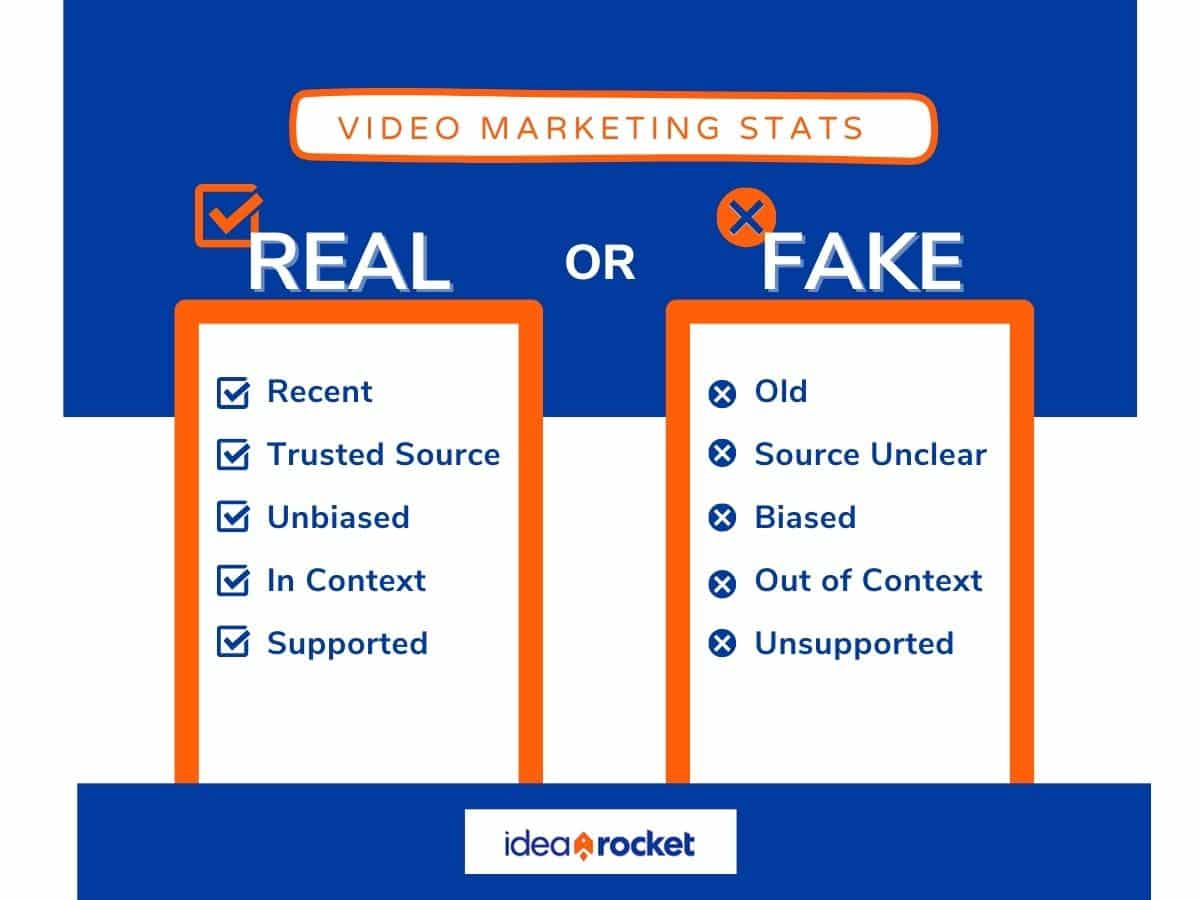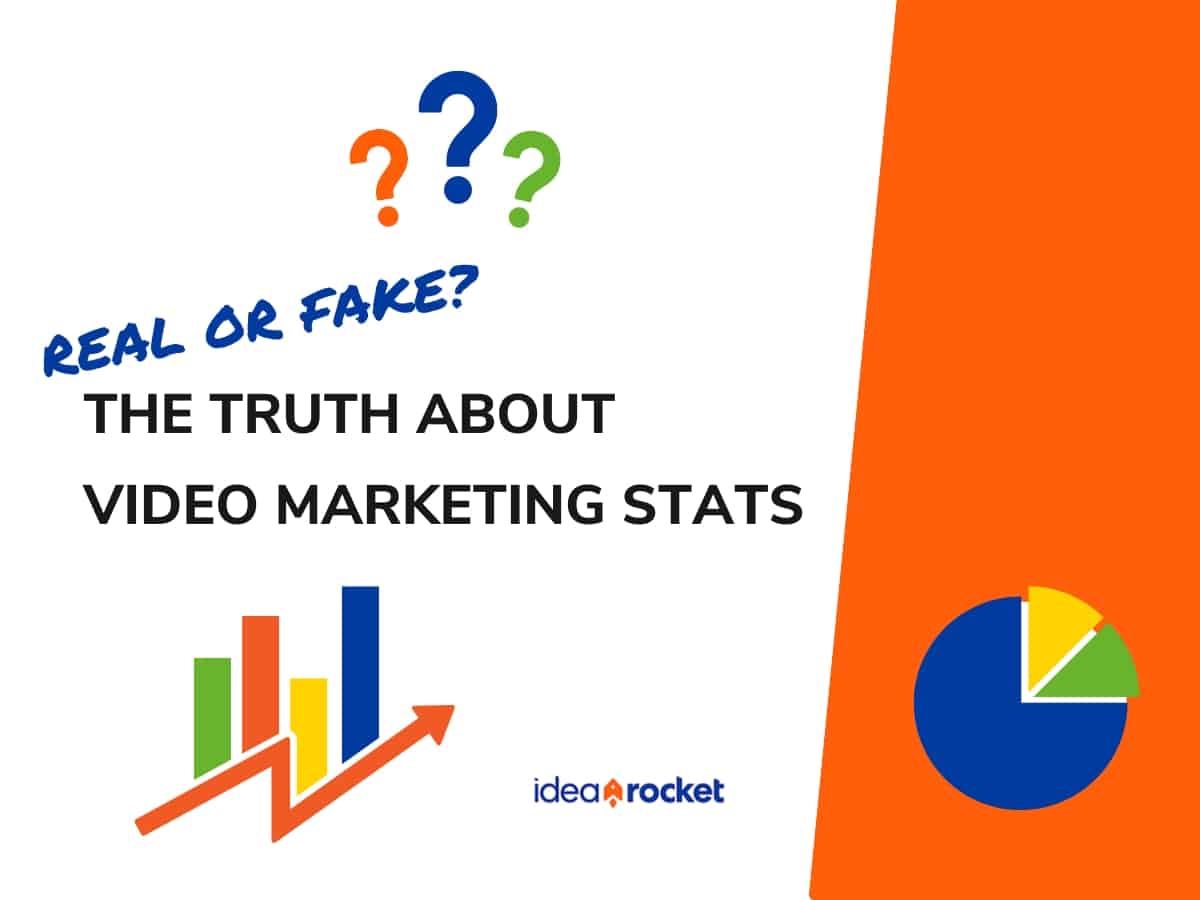As you set your video strategy, you might look for guidance from video marketing statistics. Data about when, where and how your audience watches video is valuable. So it makes sense that you would seek it out. There’s just one issue: A lot of the stats that pop up in a quick web search may not be accurate.
No, there’s no Big Video conspiracy sharing false information about video. It’s just that statistics can easily be taken out of context or hang around way past their useful life. So let’s talk about how to find reliable video marketing statistics and which ones might not be trustworthy.
Why Some Video Marketing Statistics Aren’t Trustworthy
Untrustworthy data shows up for a few reasons. Many of them are things you can guard against in your research.
- They’re based on biased data. Research on who watches video tends to be published by video creation companies or hosting companies that have a vested interest in video. If a bookstore owner told you that 100% of the people who buy books in their store are literate, would you conclude that everyone in the world is literate?
- They’re just old. Eye-catching ideas tend to hang around on the internet way after they should have been retired. If you investigate, you may find stats from years ago are still being used to talk about consumer behavior today.
- They have SEO juice. One of the big reasons companies create content is to encourage organic traffic to their website and improve search ranking. Statistics are valuable for SEO because people tend to link back to them. That’s why you see so many posts with titles like “46 and a half video marketing statistics you should know in 2023.”
- It’s taken out of context. This one happens more easily than you would think. Someone does a survey of their audience of YouTube Cooking Tutorial enthusiasts and finds that “98% of viewers want more videos about cheese danish.” Someone generalizes that data. Suddenly, you have B2B marketers trying to figure out how to relate cheese danish to their brand.
As you can see, in most cases, there’s nothing nefarious going on. Information just moves really quickly on the internet and tends to get recycled in unexpected ways.
Common Knowledge Analyzed
Here are a few video marketing statistics you might come across. There’s a lot of nuance here so rather than just calling them real or fake, we’re going to mark them as Real or Questionable.
42% of marketers surveyed say creating video content through an outside agency has resulted in better videos. Real
This statistic is based on a survey conducted by Blogspot. The company has a vested interest in marketing, but not specifically in video content. It also includes a sample group “marketers surveyed,” which tells us exactly who this statistic applies to.
Videos on social media get 12 times more shares than text and images combined. Questionable
We found this factoid on a roundup of video marketing statistics for 2022. When we followed the link. It brought us to a post made in 2016. But even that wasn’t the source post. Digging deeper, that statistic linked back to an infographic shared in 2012. Trends on social media change quickly, so relying on a statistic that’s a decade old probably isn’t the best strategy.
A video is worth 1.8 million words. Draw
We can’t call this one real or fake. This is more like artistic license. It’s based on the idea that a picture is worth 1,000 words, and there’s lots of different frames in a minute of video – but no one did a study to work this out. It’s really just a clever way to say that video is super effective, which it is.
98% of people say video converts the same or better than other forms of content. Real
This information comes from the 2022 Video in Business Benchmark Report by Vidyard. As a video hosting company, Vidyard does have a vested interest in promoting video. But this specific statistic comes from a broad sample of customers over a long period of time.

How to Spot Questionable Video Marketing Statistics
Obviously, we’re not saying you should ignore every marketing statistic you find on the internet. We just want you to avoid bad data. You can do that by:
- Checking the source. Be wary of any website that lists stats without linking out to a source.
- Finding the origin. Many websites report statistics, but only a few do the work of collecting first-person data. Dig to find where the information originally came from.
- Searching for confirmation. Look for other data that supports the statistic in question. For example, to confirm the conversion rate statistic above, we found data that says 95% of B2B buyers say that video played an important role in their purchasing decision.
We do all of these steps when writing a blog post, to make sure that we’re sharing the most relevant and useful information available. It’s one reason we update our blog posts regularly.
Where to Find Reliable Video Marketing Stats
Vetting marketing statistics takes time. One way to avoid all that legwork is to only get data from reliable sources in the first place. Here’s how to find them.
The best source for reliable video marketing statistics is your own company data. If you’ve been video marketing for a while, you’ve probably been tracking metrics and experimenting with what works. Dig into your own data to see what works for your audience.
If you need more insight, go directly to the source. Want to know the latest video trends on Youtube? Check out the YouTube page from ThinkWithGoogle. As the owners of YouTube, Google is best positioned to give you real data on what users are doing on their platform.
If you can’t go to the source, check out reliable data aggregators. Statista is a provider of market and consumer data. They don’t have a stake in the video industry, but they do have a vested interest in sharing useful and relevant statistics with marketers. That makes them a good source of reliable video marketing statistics.
At IdeaRocket, we don’t just make videos, we’re pretty much obsessed with everything video-related. We hope you’ll bookmark our blog for when you need some insight into the state of video marketing. Or reach out to us if you’re ready to start creating videos for search, social, commercials, your website or anywhere else.



